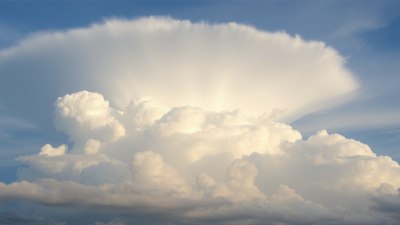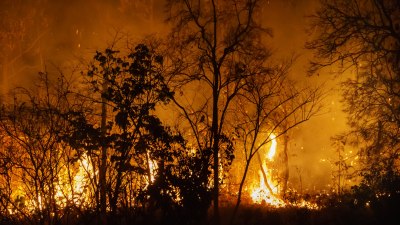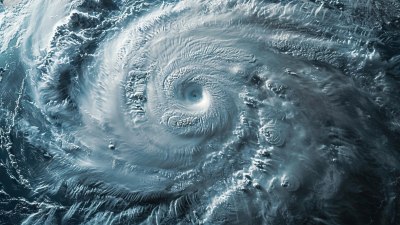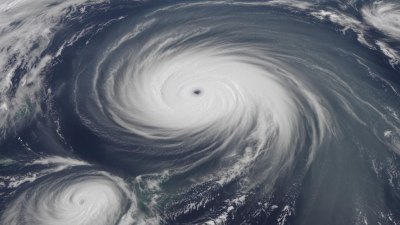How Clouds Form - And Why They All Look So Different
Discover how clouds form and why their shapes and types vary. Explore the science behind cloud formation and classification.

Image created with Flux Schnell
Clouds are one of nature's most fascinating phenomena, painting the sky with an ever-changing palette of shapes and sizes. Although they appear fluffy and light, clouds are complex structures that form through intricate processes in Earth's atmosphere. Understanding how clouds form and why they look so different requires a dive into the science of meteorology, involving water vapor, air temperature, and atmospheric conditions.
The Basics of Cloud Formation
At the core of cloud formation lies water vapor, an invisible gas present in the atmosphere. Water evaporates from Earth's surface—oceans, lakes, rivers, and even plant leaves—transforming from liquid to gas due to heat from the sun. This moisture-laden air rises because warm air is lighter than cool air. As the air ascends, it expands and cools in the lower pressure of higher altitudes. Cooling causes the water vapor to reach its dew point, condensing into tiny water droplets or ice crystals, depending on the temperature. These droplets cluster together around microscopic particles in the air called condensation nuclei, such as dust, pollen, or salt. When enough droplets gather, they become visible as a cloud.
Condensation and Saturation
For a cloud to form, the air must become saturated, meaning it holds as much water vapor as it can at a given temperature. This saturation point varies; warmer air can hold more moisture than cooler air. When air cools to the dew point—the temperature at which saturation occurs—water vapor condenses. This is why clouds often develop as air rises over mountains or when warm air meets cooler air masses. The cooling triggers condensation, leading to the formation of clouds.
Types of Clouds Based on Formation Processes
Clouds are generally classified by their formation method and altitude. Understanding the mechanisms that cause air to rise is critical to explaining different cloud types.
1. Convective Clouds: These form when the sun heats Earth's surface unevenly. Warm air parcels become buoyant and rise, carrying moisture upward until condensation occurs. Cumulus clouds, often fluffy and white with flat bottoms, are typical convective clouds.
2. Orographic Clouds: When air is forced to flow upward over a mountain range, it cools and forms clouds on the windward side. This forced uplift leads to orographic clouds which can cause precipitation.
3. Frontal Clouds: These develop where two air masses meet, such as a warm front sliding above a cold front. The warm, moist air rises over cooler air, forming layered stratus or nimbostratus clouds which often bring steady rain.
Cloud Classification by Altitude
Meteorologists categorize clouds into three main altitude levels, each with distinct characteristics:
High Clouds (Above 20,000 feet): Typically composed of ice crystals due to colder, thinner air. Cirrus clouds—thin and wispy—are a common example. They often indicate changes in weather coming within the next 24 hours.
Middle Clouds (6,500 to 20,000 feet): These include altostratus and altocumulus clouds, often grey or white, covering broad areas of the sky. They can produce light precipitation but mostly serve as a layer between high and low clouds.
Low Clouds (Below 6,500 feet): Mostly composed of water droplets, these include stratus, stratocumulus, and nimbostratus clouds. Low clouds often produce fog or steady precipitation.
How Weather Conditions Affect Cloud Appearance
The shape and texture of clouds vary widely due to differing atmospheric conditions. Temperature, humidity, wind patterns, and stability of the air mass all influence cloud appearance.
Stability of Air: Stable air inhibits vertical movement, creating widespread, flat clouds like stratus. Unstable air promotes upward convection, leading to towering cumulus or cumulonimbus clouds that can produce thunderstorms.
Humidity: Higher moisture content in rising air results in thicker and denser clouds. In contrast, lower humidity can produce wispy clouds with gaps.
Wind Shear and Turbulence: Wind changes at different altitudes can shape clouds dramatically. Mountain waves create lenticular clouds with smooth, lens shapes. Turbulence breaks clouds into shredded or ragged forms.
Why Clouds Look Different
Several factors combine to give each cloud its unique shape and character:
1. Temperature Variations: Affect the phase of water—liquid or ice—altering brightness and texture. Ice crystals in cirrus clouds reflect sunlight differently than water droplets, giving them a thin, fibrous look.
2. Altitude and Pressure: Differences in atmospheric pressure cause clouds to assume various thicknesses and densities. Lower pressure at higher altitudes results in thinner clouds.
3. Wind Patterns: Shearing winds stretch or compress clouds, influencing their form and orientation. This can create streaks or bands, especially in cirrus clouds.
4. Sunlight and Angle of View: Clouds often show shadows and highlights depending on the sun's position, changing their visual depth and color. At sunrise and sunset, they can appear pink, orange, or purple due to scattering of sunlight.
Common Cloud Types and Their Distinct Appearances
Understanding specific cloud types helps explain why clouds look so different:
Cumulus: These are the familiar puffy clouds, often resembling cotton balls. They have sharp outlines and flat bases formed by a consistent temperature where condensation begins. Their tops grow into cauliflower-shaped domes due to strong convection.
Stratus: These form low, uniform layers covering the sky like a gray blanket. Stratus clouds usually produce drizzle or light rain and bring overcast conditions.
Cirrus: High-altitude clouds that are thin and wispy. Made entirely of ice crystals, they appear delicate and feather-like, often heralding approaching weather systems.
Nimbus Clouds: These are rain-bearing clouds. The nimbostratus family forms thick, uniform layers that block sunlight, producing steady precipitation. Cumulonimbus clouds tower high, extending through all cloud levels, known for severe weather like thunderstorms, lightning, hail, and tornadoes.
Special Cloud Formations and Phenomena
Apart from typical types, clouds sometimes form unique and astonishing shapes due to unusual atmospheric dynamics.
Lenticular Clouds: These smooth, lens-shaped clouds usually form near mountains. They look like flying saucers and result from air flowing in waves over terrain.
Mammatus Clouds: Characterized by sagging pouches hanging underneath a cloud base, mammatus are most commonly associated with severe thunderstorms.
Roll Clouds and Shelf Clouds: These horizontally elongated structures are linked with advancing storm fronts, often striking in appearance.
The Role of Clouds in Earth's Climate
Clouds play a critical role in regulating Earth's temperature and climate. By reflecting sunlight, they help cool the planet's surface during the day. Conversely, clouds trap heat at night, preventing rapid cooling. Their effect depends on cloud type, altitude, and coverage. Research into cloud formation and behavior is vital for improving climate models and weather prediction.
Human Perception and Cultural Significance of Clouds
Humans have long been captivated by clouds, finding beauty, inspiration, and symbolism in their shapes. Cultures around the world have myths and legends involving clouds, often associating them with deities, messages from the heavens, or omens.
Cloud-watching is a popular pastime, with enthusiasts identifying cloud types and predicting weather changes. Artistic representations of clouds appear in literature, painting, and photography, highlighting their dynamic and transient nature.
Technological Advances in Cloud Study
Modern meteorology leverages satellites, radar, and aircraft to study clouds in unprecedented detail. Satellites provide global cloud coverage data, helping detect patterns linked to climate change. Doppler radar tracks precipitation and storm development, essential for weather forecasts and warnings. Weather balloons gather information on atmospheric temperature, humidity, and wind, improving understanding of cloud dynamics.
These technologies reveal that clouds are not static but constantly evolving systems influenced by countless variables, reinforcing the idea that no two clouds are ever exactly the same.
Clouds form when moist air cools to its dew point, causing condensation of water vapor into droplets or ice crystals around particles in the atmosphere. The way air moves upward—through heat, terrain, or frontal activity—determines the type of cloud formed. Clouds are classified by altitude and shape, ranging from thin cirrus to towering cumulonimbus. Variations in temperature, wind, humidity, and sunlight contribute to their diverse appearances.
Beyond their visual diversity, clouds are essential in Earth's water cycle and climate regulation. They inspire curiosity, represent change, and challenge scientists seeking to unravel their mysteries. The next time you look at the sky, remember that each cloud has a unique story shaped by invisible forces high above the ground.











